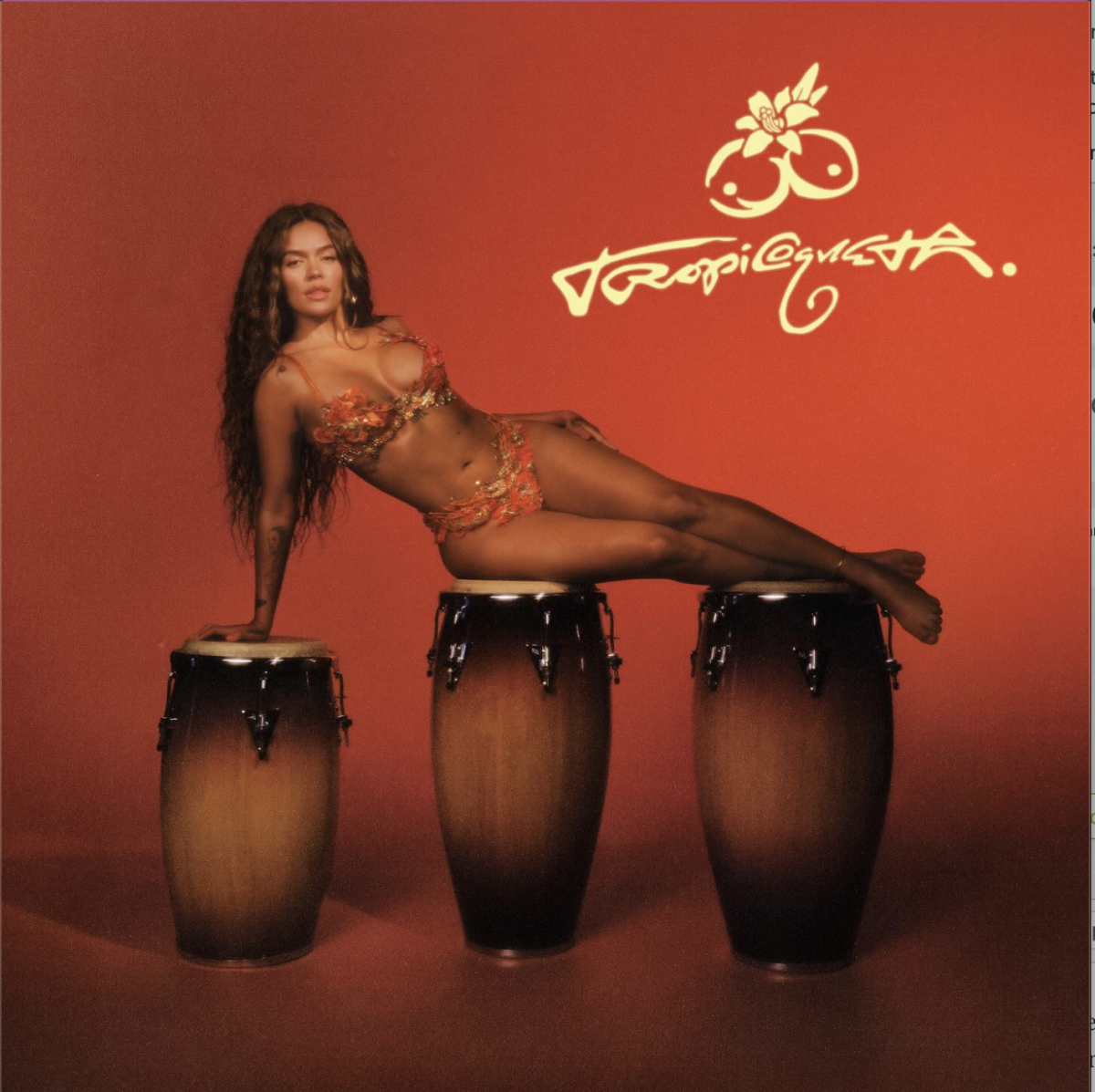On Oct. 20 in Westby Hall, Rowan Art Gallery’s Center for Art & Social Engagement (CASE) held its opening reception and artist talk for its newest installation “Gaia Theory” by silk painter Emily Erb.
“Gaia Theory” consists of three 9.5 feet tall silk paintings depicting the circulatory, lymphatic and nervous systems through collage. Erb’s inspiration for the “Gaia Theory” collection stems from road maps and topographic maps, used in her pieces “Circulatory System” and “Nervous System,” which she found at an estate sale.
“I knew that I wanted to do something with the nervous system. I actually cut up the New York Times during the pandemic and was going to fill the nervous system with the New York Times images,” said Erb. “I don’t want to remember [that] year… I made it way more timeless to put a map in a body.”
The collection’s title references the Gaia hypothesis, a theory developed by scientist James Lovelock and biologist Lynn Margulis. It’s named after the Greek goddess and personification of the Earth, Gaia. This hypothesis theorizes the Earth, as a living organism, consists of systems that interact with the Earth’s inorganic elements. Erb’s collection displays the Gaia hypothesis’s idea that humans are just another one of Earth’s systems.
When asked about the hypothesis, Erb explained how it wasn’t the initial inspiration for the collection.
“My partner was reading the obituaries in the New York Times and found that the scientist that came up with it had died and I was looking for a title for the show,” said Erb.
However, the collection feels as though it was meant to be titled after the theory. The painting’s collages are contained within the outline of human bodies, leaving the rest of the silk blank as though the body is taking in the systems around it — like the Gaia hypothesis’s systems are interacting as one organism.
The imagery in “Circulatory System” was created with a collage of topographical maps featuring the Grand Canyon, Mount Everest and the Alps. The map’s rivers represent the actual flow of the circulatory system.
Erb created “Lymphatic System” using a collage composed of World War II war maps and images from the war.
“I wanted to express that I see the lymphatic system as a little army,” Erb said.
The lymphatic system works with the body’s immune system to fight off illnesses. It’s represented in the painting in red and blue dye, while the black-and-white images fill in the space around it.
The collection’s third painting is “Nervous System.” Erb created this painting using road maps. The map’s long and wide roads turn into side streets mimicking veins becoming smaller as they spread out through the body.
Erb creates her paintings with collages of collected images, then traced their outlines to the sheets of silk. She works with silk dye and uses silver gutta, a form of resist which comes as a rubbery liquid, that stops the dye from bleeding, to create the intricate shapes in her collage painting.
Erb’s representation of the human body is what ultimately drew Rowan Art Gallery’s program director, Mary Salvante, to invite Erb to display “Gaia Theory” at CASE.
“I’ve known of Emily and her work for a number of years. I’ve seen her work and shows in Philadelphia and I was always very intrigued by it,” said Salvante. “As we were thinking about what to put up in this space, I remembered her work and I had seen these pieces in process on her social media, so it just kind of became a coincidence, but I realized they would be perfect to show in this space.”
Art installed at CASE is chosen to reflect the ideas represented in their permanent installation “The Sister Chapel,” an installation conceived by Ilise Greenstein and a group of female artists in 1974. The collaborative installation’s purpose was to honor women’s achievements from the female perspective through eleven different paintings of female figures. Before its donation to Rowan University, the installation hadn’t been on display since 1980.
“Because this space is the Center for Arts & Social Engagement, what we’re trying to do differently than the main gallery is to bring in works that might be more directly responding to societal issues,” said Salvante.
“Gaia Theory” visually connects with “The Sister Chapel” by their shared representation of the human body.
“I looked at it from the perspective that Emily’s work, these series of pieces, kind of brought the ‘Sister Chapel’ ideas into a more contemporary context,” Salvante said.
While Erb uses her art to express herself, her interests and her current views of the world, she’s not forcing herself to rush when creating it.
“Sometimes it’s not fun and I find ways to distract myself and not do what I set out to do that day and other days I’m way more focused. It’s about feeling like it versus not feeling like it,” said Erb. “It’s kind of nice to have a thing that I do, that I will always do, that nobody cares if I do because there’s no pressure, but it’s still an assignment and I’m never bored.”
Emily Erb’s “Gaia Theory” is on display until Dec. 21 at the Center for Art & Social Engagement in Westby Hall, room 110, and is free to the public.
For questions/comments about this story email [email protected] or tweet @TheWhitOnline.
























































































































































!["Working with [Dr. Lynch] is always a learning experience for me. She is a treasure,” said Thomas. - Staff Writer / Kacie Scibilia](https://thewhitonline.com/wp-content/uploads/2025/04/choir-1-1200x694.jpg)









































